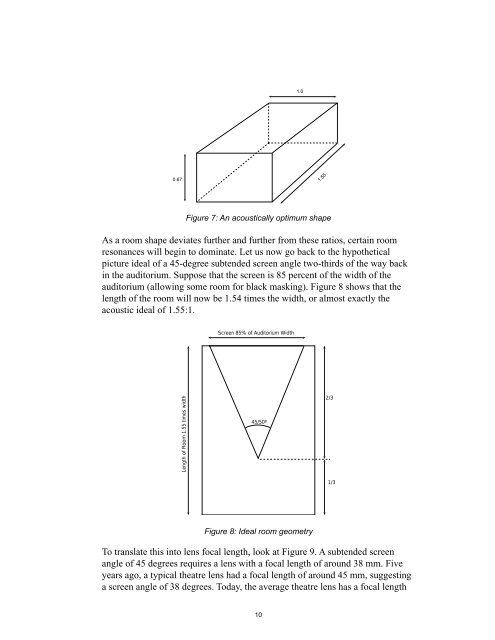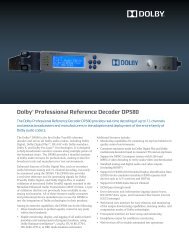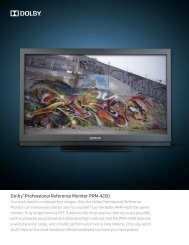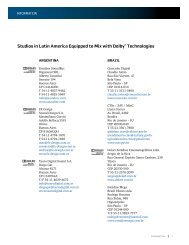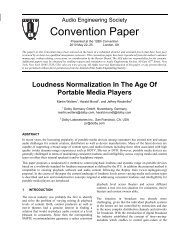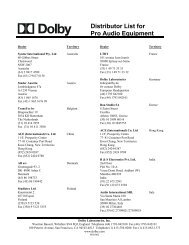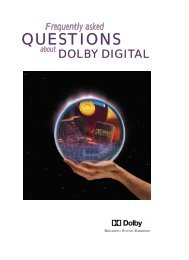Screen Sizes Impact on Picture and Sound - Dolby Laboratories Inc.
Screen Sizes Impact on Picture and Sound - Dolby Laboratories Inc.
Screen Sizes Impact on Picture and Sound - Dolby Laboratories Inc.
You also want an ePaper? Increase the reach of your titles
YUMPU automatically turns print PDFs into web optimized ePapers that Google loves.
0.67 1.55<br />
Figure 7: An acoustically optimum shape<br />
As a room shape deviates further <strong>and</strong> further from these ratios, certain room<br />
res<strong>on</strong>ances will begin to dominate. Let us now go back to the hypothetical<br />
picture ideal of a 45-degree subtended screen angle two-thirds of the way back<br />
in the auditorium. Suppose that the screen is 85 percent of the width of the<br />
auditorium (allowing some room for black masking). Figure 8 shows that the<br />
length of the room will now be 1.54 times the width, or almost exactly the<br />
acoustic ideal of 1.55:1.<br />
Length of Room 1.55 times width<br />
<str<strong>on</strong>g>Screen</str<strong>on</strong>g> 85% of Auditorium Width<br />
45/50º<br />
10<br />
1.0<br />
Figure 8: Ideal room geometry<br />
To translate this into lens focal length, look at Figure 9. A subtended screen<br />
angle of 45 degrees requires a lens with a focal length of around 38 mm. Five<br />
years ago, a typical theatre lens had a focal length of around 45 mm, suggesting<br />
a screen angle of 38 degrees. Today, the average theatre lens has a focal length<br />
2/3<br />
1/3


